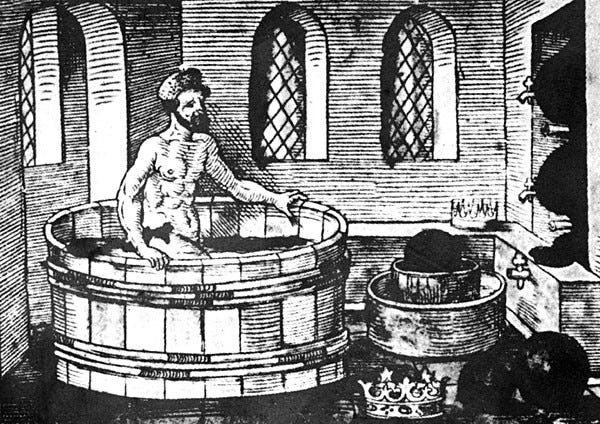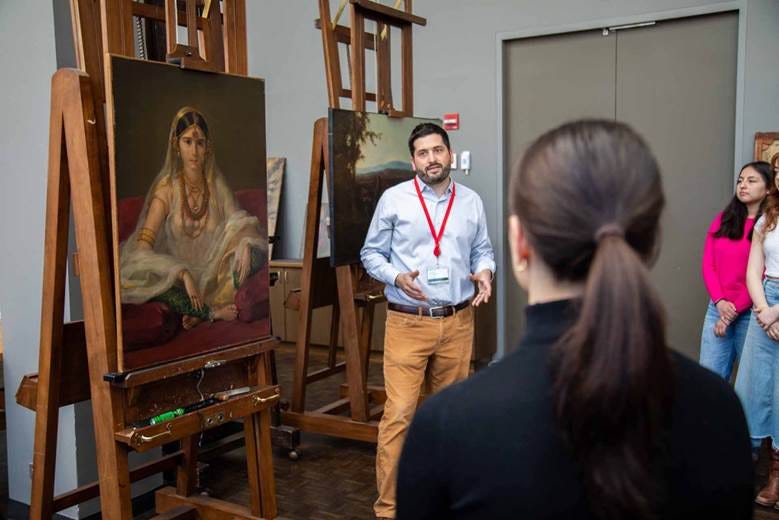Hot Take: 99% Inspiration, 1% Perspiration as the New Secret to Innovation
Juliette vs Thomas Edison
“Genius is one percent inspiration and ninety-nine percent perspiration."
-Thomas Edison
I love learning, especially about topics I'm not familiar with, by attending seminars and lectures led by experts in their fields. It’s invigorating! The great city of New York offers plenty of these opportunities. Often, I leave these events feeling relieved to discover that someone is addressing a significant problem I didn't even know existed. Besides adding the new knowledge to my ever-growing repertoire of interesting dinner topics, I always walk away inspired to rethink my challenges, ponder whether my skills can be applied in new ways, or feel re-energized by others' passions. If this doesn't motivate you to search for seminars to replace White Lotus watch parties, let me share examples of others whose orthogonal inspirations elevated their craft to new heights.
Inspired by a new solution
What do Isaac Newton and Archimedes have in common? Aside from being dead smart guys who profoundly impacted the field of physics, their breakthrough ideas came from unexpected sources: Newton was famously inspired to ponder the existence of gravity when he watched apples fall, and Archimedes was taking a bath when he realized the principles of buoyancy. Both physicists successfully developed new concepts by observing already existing phenomena elsewhere.
Modern inventions benefit from this approach, too, in seemingly unrelated industries. Great Ormond Street Hospital for Children (GOSH), the largest pediatric hospital in the UK, revamped its patient handover process after visiting Ferrari Formula One pit crews in Italy. The doctors studied the crew's procedures and rehearsals, which improved infant mortality rates, reduced stress among healthcare providers, and earned GOSH an excellent rating from the independent Healthcare Commission.
Inspired by a problem
Inspiration isn't just about finding new solutions but also about finding out you already have the solution to a problem you were unaware of in other industries. Owen Finlay Maclaren, for instance, was a test pilot and the designer of the Supermarine Spitfire. After watching his daughter struggle with a clunky pushchair, he was inspired to create a new generation of infant transport – the collapsible stroller. This initial use of collapsible design, influenced by airplane landing gear, motivated the development of future collapsible products, including the Strida bike and folding chairs.
How did oil fracking technology find itself in our ears? Dr. Andy Hildebrand worked on process reflection seismology at Exxon Production Research, where he determined the presence of oil worth drilling. He later applied his expertise in acoustic data manipulation to develop Autotune after overhearing his colleague's wife jokingly expressing a desire for a device to help her stay in tune while singing.
You might already have the innovation solution on someone's wish list: the perspiration has already been done, and all you need is the right inspiration to apply it.
Inspired just to be inspired
Most of the time, my biggest takeaway is the passion, impact, and enthusiasm experts have for their fields. I recently attended a seminar by Adam Eaker, an associate curator at the Metropolitan Museum of Art. Not only did I learn about the complex process involved in curating each piece of art, but I was also inspired by his commitment to showcasing artworks that are not traditionally recognized as significant. He is dedicated to elevating pieces by artists he believes deserve more cultural recognition and respect. This seminar prompted me to reflect on my role in highlighting topics and voices that are currently underrepresented but should be brought to the forefront.
One important aspect of inspiration is creativity. While listening to Anthony Roth Costanzo, the General Director and President of Opera Philadelphia, I was impressed by his problem-solving prowess. He adopts an interdisciplinary approach, blending other fields such as fashion, art, and non-operatic music to create fresh performances. Rather than adhering to pretentious traditions that lock out new generations from opera, he challenges the norm to make opera more accessible. Additionally, he has found innovative ways to bring music to the city, especially during the COVID lockdowns when gatherings were impossible.
This is supposed to be fun.
I also enjoy attending events within my field, especially when participants come from industries I don’t usually encounter. Audience questions, concerns, and curiosities often give me a fresh perspective on my work. However, the real value comes from embracing interdisciplinary learning; I find exploring ideas I wouldn’t typically consider much more enjoyable!
Finding inspiration—whether to solve current challenges, apply my skills to new problems, or reignite my passion for what I do—is just as important as focusing on my ongoing projects, especially in volatile times like these. After all, many successful companies emerge from recessions. You can play a role in disrupting the current norm while contributing to that success.
What’s next on my agenda? I plan to learn about AI in love language models, try my hand at figure drawing with a master artist, listen to luthiers compare Cremona violins, dive into the neuroscience of episodic memory and food-caching chickadees, ponder the quantum leaps from dancers and physicists, and discover the historical significance of hairdressing; yes, all this month! I do it for you, to bring you the freshest perspectives. :)







